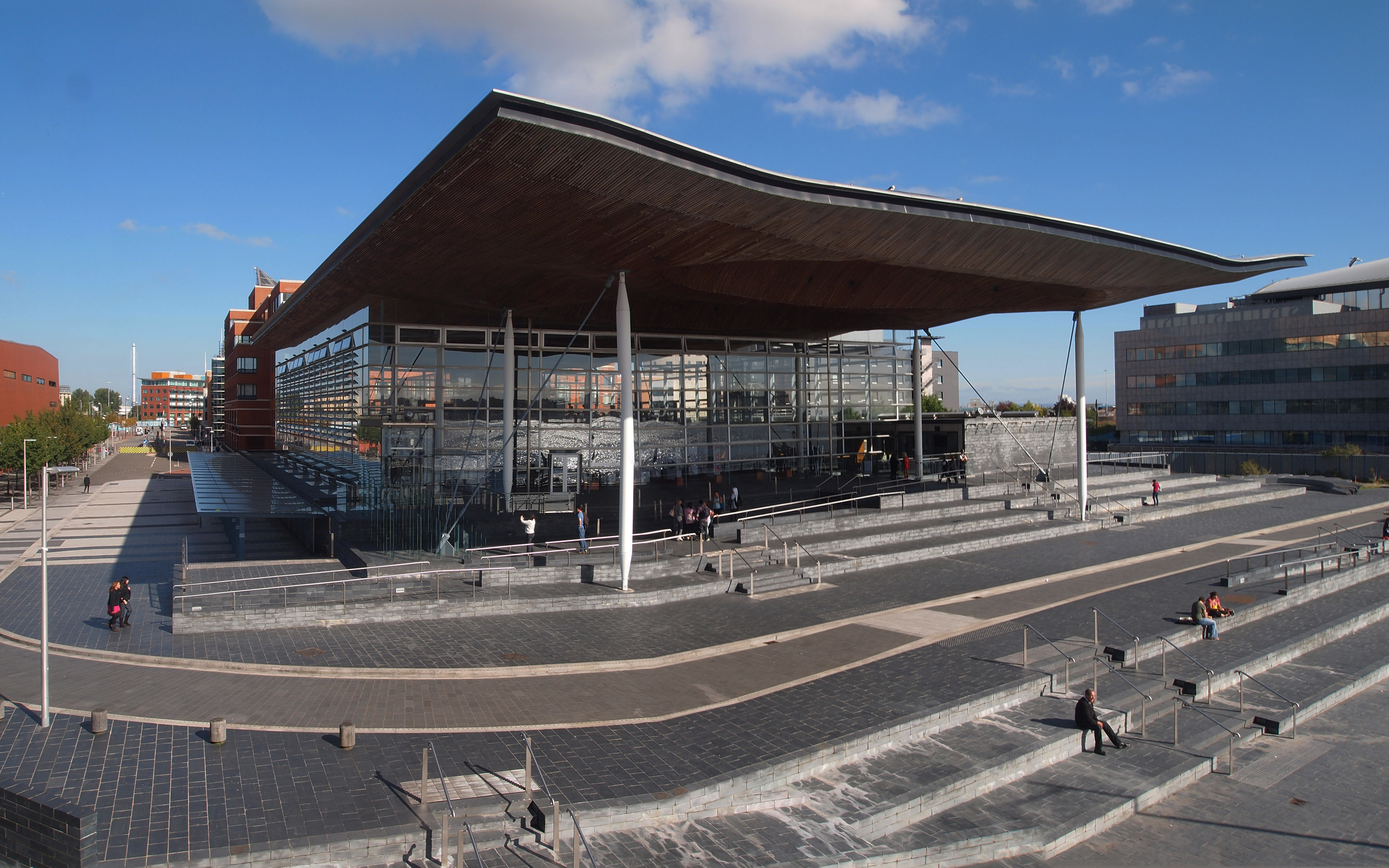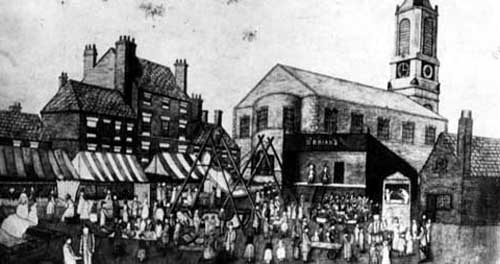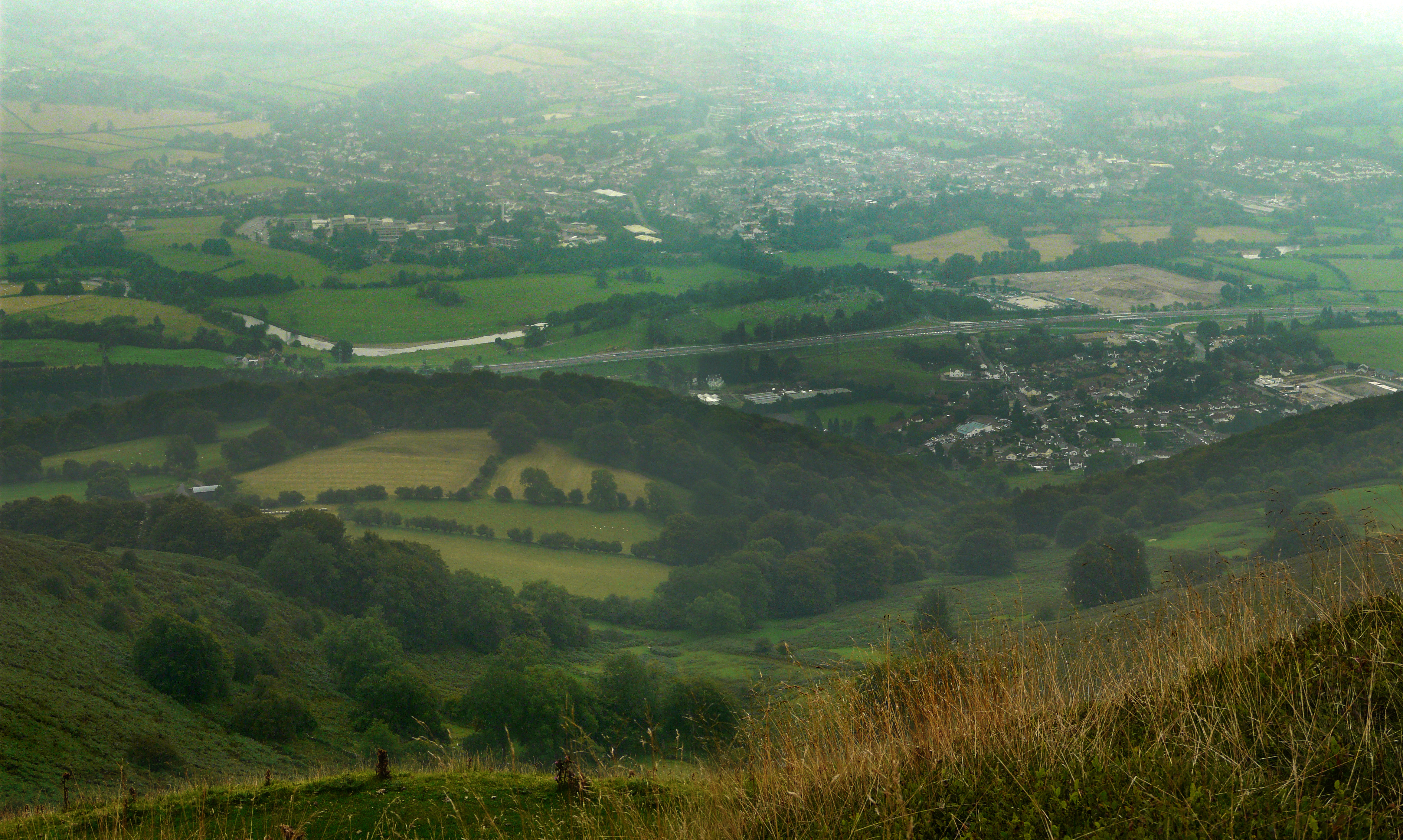|
Pontypool And Blaenavon Railway
The Pontypool and Blaenavon Railway ( cy, Rheilffordd Pont-y-pŵl a Blaenafon) is a volunteer-run heritage railway in South Wales, running trains between a halt platform opposite the Whistle Inn public house (famed for its collection of miners' lamps) southwards to the town of Blaenavon via a two-platform station at the site of former colliery furnace of the Big Pit National Coal Museum. The line is the highest preserved standard-gauge line in the United Kingdom, and also uniquely having the only standard-gauge rail-over-rail bridge within preservation. History of the line The line from Brynmawr to Blaenavon was originally built under an Act of 1866 by the Brynmawr and Blaenavon Railway and immediately leased to the London and North Western Railway (LNWR) to transport coal to the Midlands via the Heads of the Valleys line. The line was completed in 1869 and the LNWR commenced operating passenger trains over the line the following year (1870). Eight years later it wa ... [...More Info...] [...Related Items...] OR: [Wikipedia] [Google] [Baidu] |
Blaenavon
Blaenavon ( cy, Blaenafon) is a town and community (Wales), community in Torfaen county borough, Wales, high on a hillside on the source of the Afon Lwyd. It is within the boundaries of the historic county of Monmouthshire (historic), Monmouthshire and the Preserved counties of Wales, preserved county of Gwent (county), Gwent. The population is 6,055. Parts of the town and surrounding country form the Blaenavon Industrial Landscape, inscribed as a World Heritage Site by UNESCO in 2000. History ''Blaenavon'' literally means "head of the river" or loosely "river's source" in the Welsh language. Blaenavon grew around an ironworks opened in 1788 by the West Midlands (region), West Midlands industrialist, Thomas Hill of Dennis, Thomas Hill, and his partners, Thomas Hopkins and Benjamin Pratt. The businessmen invested £40,000 into the iron works project and erected three blast furnaces. Hopkins, as a result of operating the Cannock Wood Forge in Rugeley, Staffordshire, was in ... [...More Info...] [...Related Items...] OR: [Wikipedia] [Google] [Baidu] |
Newport, Wales
Newport ( cy, Casnewydd; ) is a city and Local government in Wales#Principal areas, county borough in Wales, situated on the River Usk close to its confluence with the Severn Estuary, northeast of Cardiff. With a population of 145,700 at the 2011 census, Newport is the third-largest authority with City status in the United Kingdom, city status in Wales, and seventh List of Welsh principal areas, most populous overall. Newport became a unitary authority in 1996 and forms part of the Cardiff-Newport metropolitan area. Newport was the site of the last large-scale armed insurrection in Great Britain, the Newport Rising of 1839. Newport has been a port since medieval times when the first Newport Castle was built by the Normans. The town outgrew the earlier Roman Britain, Roman town of Caerleon, immediately upstream and now part of the borough. Newport gained its first Municipal charter, charter in 1314. It grew significantly in the 19th century when its port became the focus of Coa ... [...More Info...] [...Related Items...] OR: [Wikipedia] [Google] [Baidu] |
Carwyn Jones
Carwyn Howell Jones (born 21 March 1967) is a Welsh politician who served as First Minister of Wales and Leader of Welsh Labour from 2009 to 2018. He served as Counsel General for Wales from 2007 to 2009. Jones served as the Member of the Senedd (MS) for Bridgend from 1999 to 2021. Jones served in the Cabinet as Secretary for Agriculture and Rural Development in the Welsh Government from 2000 to 2002, and as Minister of State for the Environment from 2003 to 2007. Following the 2007 election, he was appointed Minister for Education, Culture and the Welsh Language, and thereafter Counsel General for Wales and Leader of the House following the One Wales coalition agreement with Plaid Cymru. Jones succeeded Rhodri Morgan as Welsh Labour Leader and First Minister on 1 December 2009, after Jones was elected with over 50% of the vote. The third politician to lead the Welsh Government, Jones was nominated as First Minister by the National Assembly on 9 December 2009, and wa ... [...More Info...] [...Related Items...] OR: [Wikipedia] [Google] [Baidu] |
National Assembly For Wales
The Senedd (; ), officially known as the Welsh Parliament in English language, English and () in Welsh language, Welsh, is the Devolution in the United Kingdom, devolved, unicameral legislature of Wales. A democratically elected body, it makes laws for Wales, agrees certain taxes and scrutinises the Welsh Government. It is a bilingual institution, with both Welsh language, Welsh and English language, English being the official languages of its business. From its creation in May 1999 until May 2020, the Senedd was known as the National Assembly for Wales ( cy, Cynulliad Cenedlaethol Cymru, lang, link=no). The Senedd comprises 60 members who are known as Member of the Senedd, Members of the Senedd (), abbreviated as "MS" (). Since 2011, members are elected for a five-year term of office under an additional member system, in which 40 MSs represent smaller geographical divisions known as Senedd constituencies and electoral regions, "constituencies" and are elected by first-past-the ... [...More Info...] [...Related Items...] OR: [Wikipedia] [Google] [Baidu] |
Hunslet 0-6-0ST Eastmoor Steelworks No 18 Jessie Run Round Blaenavon Furnace Sidings
Hunslet () is an inner-city area in south Leeds, West Yorkshire, England. It is southeast of the Leeds city centre, city centre and has an industrial past. It is situated in the Hunslet and Riverside (ward), Hunslet and Riverside ward of Leeds City Council and Leeds Central (UK Parliament constituency), Leeds Central parliamentary constituency. The population of the previous City and Hunslet council ward at the 2011 census was 33,705. Many engineering companies were based in Hunslet, including John Fowler & Co. manufacturers of traction engines and steam rollers, the Hunslet Engine Company builders of locomotives (including those used during the construction of the Channel Tunnel), Kitson & Co., Manning Wardle and Hudswell Clarke. Many railway locomotives were built in the Jack Lane area of Hunslet. The area has a mixture of modern and 19th century industrial buildings, terraced house, terraced housing and 20th century housing. It is an area that has grown up significantly a ... [...More Info...] [...Related Items...] OR: [Wikipedia] [Google] [Baidu] |
Big Pit Halt - Geograph-4069308-by-Gareth-James
Big or BIG may refer to: * Big, of great size or degree Film and television * ''Big'' (film), a 1988 fantasy-comedy film starring Tom Hanks * ''Big!'', a Discovery Channel television show * ''Richard Hammond's Big'', a television show presented by Richard Hammond * ''Big'' (TV series), a 2012 South Korean TV series * ''Banana Island Ghost'', a 2017 fantasy action comedy film Music * '' Big: the musical'', a 1996 musical based on the film * Big Records, a record label * ''Big'' (album), a 2007 album by Macy Gray * "Big" (Dead Letter Circus song) * "Big" (Sneaky Sound System song) * "Big" (Rita Ora and Imanbek song) * "Big", a 1990 song by New Fast Automatic Daffodils * "Big", a 2021 song by Jade Eagleson from ''Honkytonk Revival'' *The Notorious B.I.G., an American rapper Places * Allen Army Airfield (IATA code), Alaska, US * BIG, a VOR navigational beacon at London Biggin Hill Airport * Big River (other), various rivers (and other things) * Big Island (disambigua ... [...More Info...] [...Related Items...] OR: [Wikipedia] [Google] [Baidu] |
Blaenavon Furnace Sidings Station Building
Blaenavon ( cy, Blaenafon) is a town and community in Torfaen county borough, Wales, high on a hillside on the source of the Afon Lwyd. It is within the boundaries of the historic county of Monmouthshire and the preserved county of Gwent. The population is 6,055. Parts of the town and surrounding country form the Blaenavon Industrial Landscape, inscribed as a World Heritage Site by UNESCO in 2000. History ''Blaenavon'' literally means "head of the river" or loosely "river's source" in the Welsh language. Blaenavon grew around an ironworks opened in 1788 by the West Midlands industrialist, Thomas Hill, and his partners, Thomas Hopkins and Benjamin Pratt. The businessmen invested £40,000 into the iron works project and erected three blast furnaces. Hopkins, as a result of operating the Cannock Wood Forge in Rugeley, Staffordshire, was in contact with skilled and experienced ironworkers, and managed to persuade many of them to migrate to Blaenavon to help establish the n ... [...More Info...] [...Related Items...] OR: [Wikipedia] [Google] [Baidu] |
National Cycle Network
The National Cycle Network (NCN) is the national cycling route network of the United Kingdom, which was established to encourage cycling and walking throughout Britain, as well as for the purposes of bicycle touring. It was created by the charity Sustrans who were aided by a £42.5 million National Lottery grant. However Sustrans themselves only own around 2% of the paths on the network, these rest being made of existing public highways and rights of way, and permissive paths negotiated by Sustrans with private landowners, which Sustrans have then labelled as part of their network. In 2017, the Network was used for over 786 million cycling and walking trips, made by 4.4 million people. In 2020, around a quarter the NCN was scrapped on safety grounds, leaving of signed routes. These are made up of of traffic-free paths with the remaining on-road. It uses shared use paths, disused railways, minor roads, canal towpaths and traffic-calmed routes in towns and cit ... [...More Info...] [...Related Items...] OR: [Wikipedia] [Google] [Baidu] |
Cwmbran
Cwmbran ( ; cy, Cwmbrân , also in use as an alternative spelling in English) is a town in the county borough of Torfaen in South Wales. Lying within the historic boundaries of Monmouthshire, Cwmbran was designated as a New Town in 1949 to provide new employment opportunities in the south eastern portion of the South Wales Coalfield. Geography Comprising the villages of Old Cwmbran, Pontnewydd, Upper Cwmbran, Henllys, Croesyceiliog, Llantarnam and Llanyrafon, its population had grown to 48,535 by 2011. This makes it the sixth largest urban area in Wales. Sitting as it does at the corner of the South Wales Coalfield, it has a hilly aspect to its western and northern edges, with the surrounding hills climbing to over . The Afon Llwyd forms the major river valley, although the most significant water course is probably the remains of the Monmouthshire & Brecon Canal. To the east of Cwmbran the land is less hilly, forming part of the Usk valley. Etymology The name of the tow ... [...More Info...] [...Related Items...] OR: [Wikipedia] [Google] [Baidu] |
National Coal Board
The National Coal Board (NCB) was the statutory corporation created to run the nationalised coal mining industry in the United Kingdom. Set up under the Coal Industry Nationalisation Act 1946, it took over the United Kingdom's collieries on "vesting day", 1 January 1947. In 1987, the NCB was renamed the British Coal Corporation, and its assets were subsequently privatised. Background Collieries were taken under government control during the First and Second World Wars. The Sankey Commission in 1919 gave R. H. Tawney, Sidney Webb and Sir Leo Chiozza Money the opportunity to advocate nationalisation, but it was rejected. Coal reserves were nationalised during the war in 1942 and placed under the control of the Coal Commission, but the mining industry remained in private hands. At the time, many coal companies were small, although some consolidation had taken place in the years before the war. Formation and organisation The NCB was one of a number of public corporations cr ... [...More Info...] [...Related Items...] OR: [Wikipedia] [Google] [Baidu] |
Big Pit
Big Pit National Coal Museum ( cy, Pwll Mawr Amgueddfa Lofaol Cymru) is an industrial heritage museum in Blaenavon, Torfaen, Wales. A working coal mine from 1880 to 1980, it was opened to the public in 1983 as a charitable trust called the Big Pit (Blaenavon) Trust. By 1 February 2001 Big Pit Coal Museum was incorporated into the National Museum and Galleries of Wales as the National Mining Museum of Wales. The site is dedicated to operational preservation of the Welsh heritage of coal mining, which took place during the Industrial Revolution. Located adjacent to the preserved Pontypool and Blaenavon Railway, Big Pit is part of the Blaenavon Industrial Landscape, a World Heritage Site, and an Anchor Point of the European Route of Industrial Heritage. History of the working pit Big Pit was originally an iron mine, driven into the side of the mountain not far from the surface due to the shallow iron deposits, the level is called Engine Pit Level and can still be seen on the ... [...More Info...] [...Related Items...] OR: [Wikipedia] [Google] [Baidu] |
Blorenge
Blorenge, also called The Blorenge (; cy, Blorens), is a prominent hill overlooking the valley of the River Usk near Abergavenny, Monmouthshire, southeast Wales. It is situated in the southeastern corner of the Brecon Beacons National Park. The summit plateau reaches a height of . Geography Blorenge overlooks the market town of Abergavenny and the villages of Llanfoist and Govilon in the Usk Valley to the north. At the foot of the hill lies the Monmouthshire & Brecon Canal. It drops away steeply to the northwest into Cwm Llanwenarth. To the south, gentler slopes fall away to Blaenavon at the head of the Lwyd valley. Prominent peaks seen from the Blorenge include the Skirrid to the east of Abergavenny and the Sugar Loaf to the north. The high moorland ridge continues to the south of the minor road at Foxhunter car park and assumes the name Mynydd y Garn-fawr. The cairn referenced in the title of this southerly shoulder of Blorenge may be that now known as Carn y Defaid whic ... [...More Info...] [...Related Items...] OR: [Wikipedia] [Google] [Baidu] |









